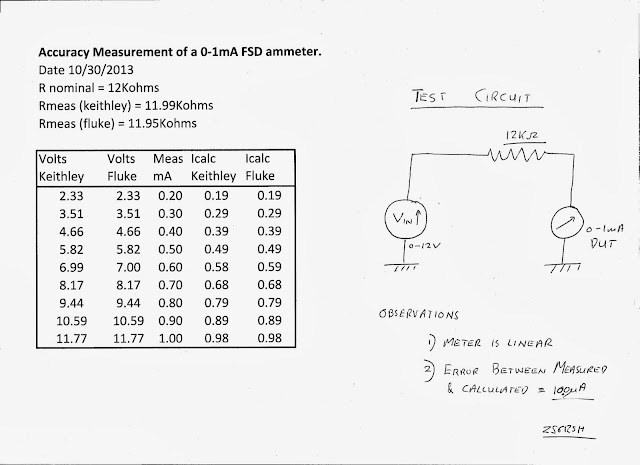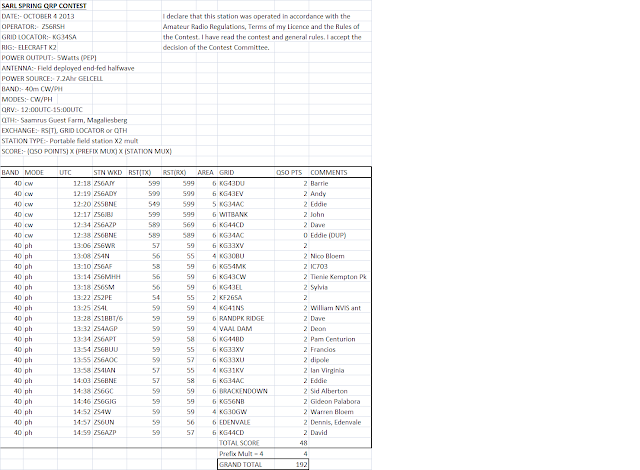In trying to make contact across town with ZS6DLL om Daryl in Centurion at around midnight last night, I got to experiment with my 66ft end fed wire. Daryl was wanting to make his very first CW QSO. Well this was a goal worth trying to achieve asap. I didn't want him making the Big One with another station hi hi:)
I normally use this antenna for 40meters where it behaves as a half wave end-fed. For 40 meters of course it exhibits an end impedance of between 4000 and 5000 ohms. Thus a coupler is needed to perform an impedance match down to 50ohms. With a short 6ft counterpoise I have had great sucess with South Africa wide QSO's using 5 watts transmit power.
On 80meters this antenna has a theoretical end fed impedance of around 35-50ohms. Thus, providing a good ground can be established then it should be possible to connect the wire straight to the transmitter with perhaps some small adjustment using a traditional L type transmatch.
This wire is an inverted L with about 25feet hanging vertical and the rest horizontal. The wire is exactly 66ft long. So if I assume the popular dipole formula 468/F(Mhz) is correct then on 80 meters and applied also to a quarterwave then I would see resonance at F(Mhz) = (468/66)/2 = 3545Mhz.
I first started in the middle of the night by deploying 2 ground wires stretched along my garden lawn and right under the antenna. I suppose these wires were each about 40ft in length. Using my MFJ259B antenna analyzer I was able to obtain a dip at approx 3.8MHz with an SWR of 3.5:1.
If I now determine what my formula is I get C= F(Mhz)* Length (ft) = 3.8*66 = 251 which for a dipole would be 251*2= 501. Ie higher than the theoretical 468.
Since I wanted to operate on 3675Khz which is the local QRP hangout, I needed to add wire to the antenna. I added 6ft and was able to obtain a dip on frequency at 3579Khz with an SWR of 3.5:1. How does this compare with my locally derived formula? F(Mhz) = 250/72 = 3472Khz. Thus the result does not agree with the theory... But it was the middle of the night and dark on the lawn!
I then reoriented and lifted the antenna higher above the ground to 1bout 6ft for the section entering the radio. I also strung out a third much longer radial. This was approx 90ft long. This ground wire had the effect of dramatically reducing the SWR to 1.2:1 with little effect on the resonant frequency.
I was unable to QSO with ZS6DLL at around midnight. I could not hear any stations on the band which was a surprise, but then I never normally listen to 80m. The band was quiet. ZS6DLL may have some issues with his system (to be further checked out).
This morning at 6:30 I listened for the local QRP net on 3579Khz and heard nothing. I suspect the net was not operating. No station answered my CQ. I could hear weak stations on Phone further up the band. Noise was running higher at about S2. My Tx loaded up perfectly.
This set of rough experiments did indicate to me that it may be possible to operate on 80 meters with my garden antenna. However more precise measurements need to be made to better understand what is happening. Clearly a longer set of ground wires and perhaps a few ground rods must make a significant difference. How do I do that and deploy wires without invoking the wrath of my XYL with the lawn mower!

















